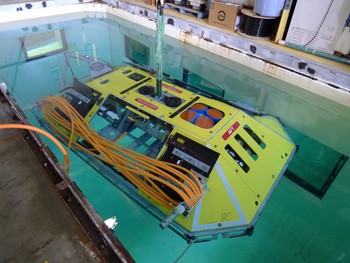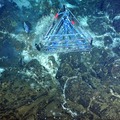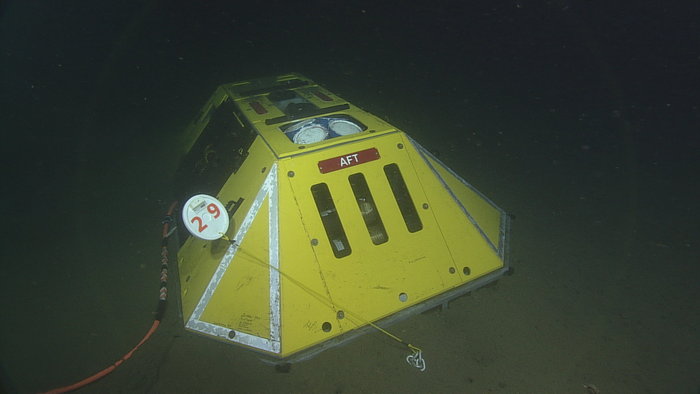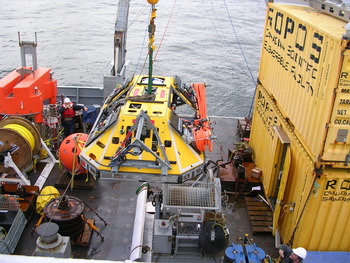
The Benthic Experiment Package (BEP) is composed of a hazard-resistant frame (shown here), the inside of which hosts an UW-APL-designed Low Power communications housing, and a variety of sensors to measure oceanographic properties that include acidity (pH), carbon dioxide, salinity and oxygen concentrations, and currents. A hydrophone that will be mounted outside of the frame will be used to detect sounds in the ocean.
The BEP is scheduled for installation in 2014 at the Endurance Offshore site that is part of the Endurance Array's Newport Line. This site is also the location of one of the RSN Primary Nodes, which is the power and data hub for the BEP Low-Power Junction Box, which is in turn the power and data hub for a variety of instrument platforms.
The Benthic Experiment Package (BEP) is composed of a hazard-resistant frame, the inside of which hosts an UW-APL-designed Low Power communications housing, and a variety of sensors to measure oceanographic properties that include acidity (pH), carbon dioxide, salinity and oxygen concentrations, and currents. A hydrophone that will be mounted outside of the frame will be used to detect sounds in the ocean.
Sensors on the BEP include the following:
- Broadband Hydrophone
- Acoustic Doppler Current Profiler (ADCP)
- Conductivity-Temperature-Depth (CTD) and Dissolved Oxygen Sensors
- Turbulent-Flow Current Meter (VEL3D)
- pH and CO2 Sensors
- Optical Attenuation Sensor
The BEP is scheduled for installation in 2014 at the Endurance Oregon Offshore and Endurance Oregon Shelf sites that are part of the Endurance Array's Newport Line. These sites are also the location of primary nodes PN1C and PN1D, respectively, which are the power and data hubs for the BEP Low-Power Junction Boxes, which are in turn the power and data hubs for a variety of instrument platforms.




